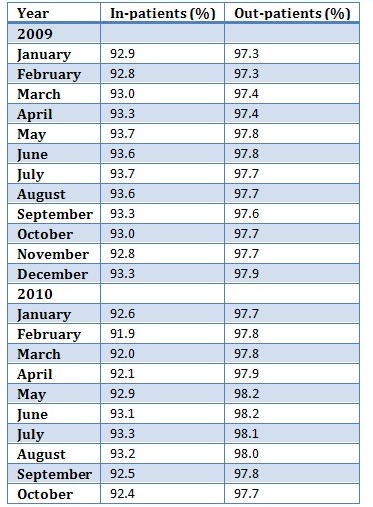Waiting times raise the political temperature
Andrew Lansley’s appearance before the Health Select Committee on December 12 produced an argument fit for the fourth form. An assertion by Rosie Cooper, Labour MP for West Lancashire, that waiting times for hospital treatment were rising was followed by this exchange:
Mr Lansley: No, they’re not.
Rosie Cooper: Yes, they are.
Mr Lansley: No, they’re not.
Rosie Cooper: The evidence is that that is true.
Chair: Evidence can’t proceed on the basis of, "Yes, they are," and, "no, they’re not."
Mr Lansley: We have published the data.
Later in the same session, Ms Cooper repeated the charge and added detail.The number of people waiting more than 18 weeks for treatment in the NHS had increased by 15 per cent since the coalition Government abandoned the 18-week target, she said. “That is 6,000 more people waiting” she said.
Mr Lansley: That was the August figure. It is all to do with the summer. That’s ridiculous.
Rosie Cooper: I beg your pardon.
Mr Lansley: That is all to do with the summer. You have to do a seasonal adjustment on that.
It is not clear what the health secretary meant by this, as the figures are not seasonally adjusted, and nor does August’s data show anything special. (There are some seasonal variations in waits, but they show no very clear pattern for the 18-week statistics.) The Table below shows monthly figures for the percentage of patients waiting fewer than 18 weeks between GP referral and hospital treatment, either as admitted patients or as out-patients, since the beginning of 2009.
Table: referral to treatment statistics

The data is available from the monthly published statistics, but was conveniently published up to September 2010 in a parliamentary answer to a question by Liz Kendall MP on December 1.
Although the 18-week target was abandoned in June, the DH continues to record the data, which shows no very clear trend. The proportion of in-patients treated within 18 weeks fell very slightly between October 2009 and the same month this year (from 93.0 to 92.4 per cent), but it was lower than this in the months running up to the election. The proportion of out-patients treated within 18 weeks shows little variation.
Pulse focussed on these figures on 7 December under the headline “Hospital waits soar after end of 18-week target”, a story picked up by The Times and which probably inspired Ms Cooper. But Pulse could only reach this conclusion by using July as the baseline and comparing it against September – the October figures not then being available.
Had it compared the September figures with the last full month before the election, April, it would have concluded that the NHS treated almost 12 per cent more patients within 18 weeks in September (1.22 million) than it did in April (1.09 million) and the proportion who missed the target, taking in-patients and out-patients together, was lower in September than in April.
How long can the NHS sustain the 18-week target, now that it is no longer imposed by ministers? There’s no doubt that the opposition will be watching these figures carefully, ready to pour scorn on Mr Lansley if they show signs of faltering. Cutting waiting times was a major achievement of the Labour years, and it will be impossible for the Coalition to claim they do not matter.
But so far it is too soon to discern any perceptible change – a conclusion also reached by the King’s Fund in an analysis by John Appleby.The next set of figures, for November 2010, is due on January 20 and will be closely watched.




richard blogger (not verified) wrote,
Tue, 04/01/2011 - 16:54
"he Table below shows monthly figures for the percentage of patients waiting fewer than 18 weeks between ***GP referral*** and hospital treatment"
My emphasis. This is important. It is estimated that one third of PCTs have deficits and the tightening PCT budgets mean that they are desperate to reduce costs. (Next year, although PCTs will nominally get a 3% increase, much of that will be eaten away by things like the spending review's transfer of money from the NHS to social care. In addition, 2% of PCTs' income will be withheld by SHAs and used to pay for Lansley's vanity re-organisation of the NHS.)
To make these cost reductions, PCTs are writing to GPs to ask them to stop referring patients for any treatment other than urgent treatments (A&E, fractures and cancer are allowed) until next financial year. Since GPs are NOT referring patients for cataracts, hip and knee operations, it means that these waiting times are NOT showing up in the 18 week figures. Sneaky, eh?
The 18 week statistics are starting to look more than a little inaccurate. In some areas (Warwickshire, Kent and Essex) they are totally meaningless because you have to get past a GP appeal board before you can get referred.